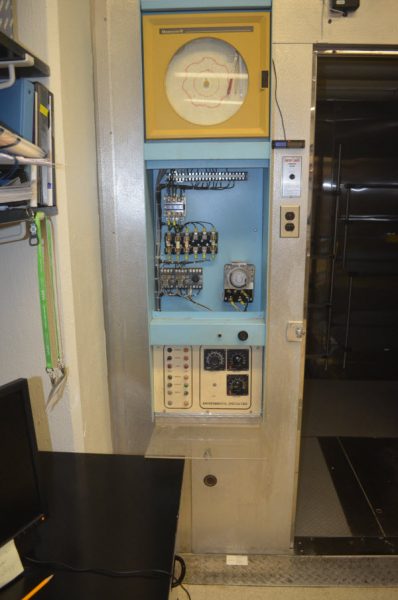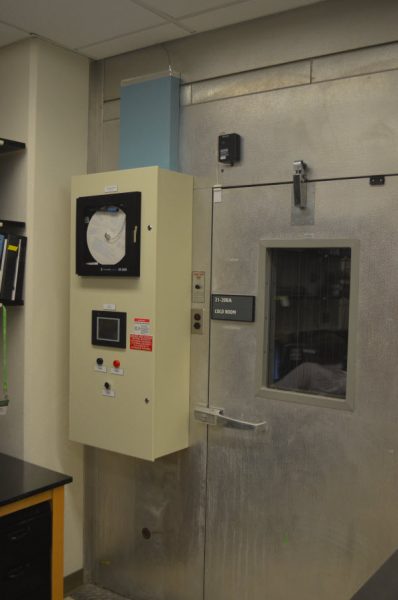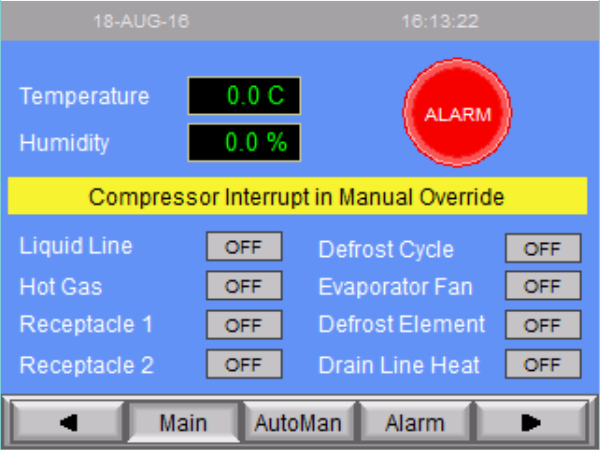The University of North Carolina (UNC) at Chapel Hill spends almost $1 billion on research annually, ranking eighth among universities in the U.S. However, it was spending too much money and time supporting an existing temperature chamber control system.

UNC performs research in approximately 1000 temperature chambers throughout the campus. Critical studies are performed in many of these chambers, and others are used to store millions of dollars of products. This demands precise temperature control, with some requiring accuracy within half a degree Celsius.
Allan Evora, President of Affinity Energy, discusses in his article, Open system gives precise temperature control in the September 2017 issue of Control magazine, how Affinity Energy used AutomationDirect hardware to save time and money while replacing obsolete cold, warm and freezer chamber control systems.
Obsolete Control System Hardware
Some of the research temperature chambers were over 20-years old, and parts were becoming difficult to find. Many chambers used similar hardware, so when a malfunctioning temperature controller could not be repaired, there was concern it could become a campus-wide issue.

Allen discusses the need for better temperature control:
In addition, needs were expanding, with researchers requesting tighter, more accurate temperature and humidity control, and the ability to view temperatures in real time. None of these requests were possible with the old control and monitoring systems. Investigation showed it would be too expensive to upgrade the existing proprietary systems, so the university sought a more affordable and flexible solution.
After speaking with many system integrators wanting to employ proprietary programming technology, UNC Chapel Hill decided to work with Affinity Energy after hearing of the company’s reputation for open-system PLC integration for critical systems.
A New, Universal Control System
The project goal was to specify a programmable logic controller (PLC) to control any research chamber, so Affinity created a universal temperature control panel that could control the variety of systems in use at the university. Once designed, the control system could be customized and configured to work with any chamber, regardless of the existing cooling technology or controller used.
After extensive hardware and controller research, UNC Chapel Hill and Affinity Energy specified AutomationDirect PLCs. Because AutomationDirect’s PLC programming software is open, the university wouldn’t have to be held hostage to proprietary software or a single system integrator’s services if they wanted to adjust or completely overhaul the system in the future.
The original chamber controller had minimal operator interface and only basic temperature indication. Failures were manually detected by opening the chamber door and viewing the temperature, by which time it was often too late. The original system also could not accurately control the temperature as there were large fluctuations. Affinity designed a system to replace the original controller using an AutomationDirect Do-more PLC, and it worked well.

The new controller provides smoother and more accurate control than the legacy control systems. The controller enclosure is built with the PLC and other control devices (drivers, relays, etc.) as a unit. Field devices are wired to terminal blocks included for connections, and the panel is mounted on a wall outside the environmental chamber.
The Do-more PLC is fast, has plenty of memory, and includes multiple communication options such as serial, USB and embedded Ethernet. It can be configured for several separate Ethernet communications ports, each running multiple protocols. The Do-more PLCs are programmed with the Do-more Designer software, available free online.
Allan also discussed the AutomationDirect C-more human machine interface (HMI) that was installed.
The main HMI screen displays the temperature in the room and alarm indicator (Figure 4). It also includes status indicators for the various field devices such as liquid and hot gas valves and evaporator fans, and shows whether a defrost cycle is active or not. An operator adjusts the room temperature using the HMI by entering a password-protected screen.

The HMI also includes data logging to a built-in SD memory card or FTP server. Additional connectivity includes email messaging along with web server and remote Internet access.
Open Control Software
Allen discussed how the refrigeration process worked. In this application, temperature is controlled and maintained by managing the liquid line and hot gas valves. The liquid line is usually open, cooling the chamber. A hot gas valve injects some of this liquid back to the inlet.
Allen describes the custom PID control method used for this application:
Although it is an advanced control function, it was relatively simple for Affinity Energy to develop the custom-control algorithm in the AutomationDirect PLC. The algorithm is essentially a PI loop, but coded explicitly rather than using the off-the-shelf PID programming module in the controller.
The result is a control system maintain a steady temperature within a half a degree Celsius. The design Affinity provided allows UNC personnel to modify and update the system themselves. A plan is in process to replace controllers across the UNC campus using this successful, universal control solution based on AutomationDirect Do-more PLCs and C-more HMIs.
=


